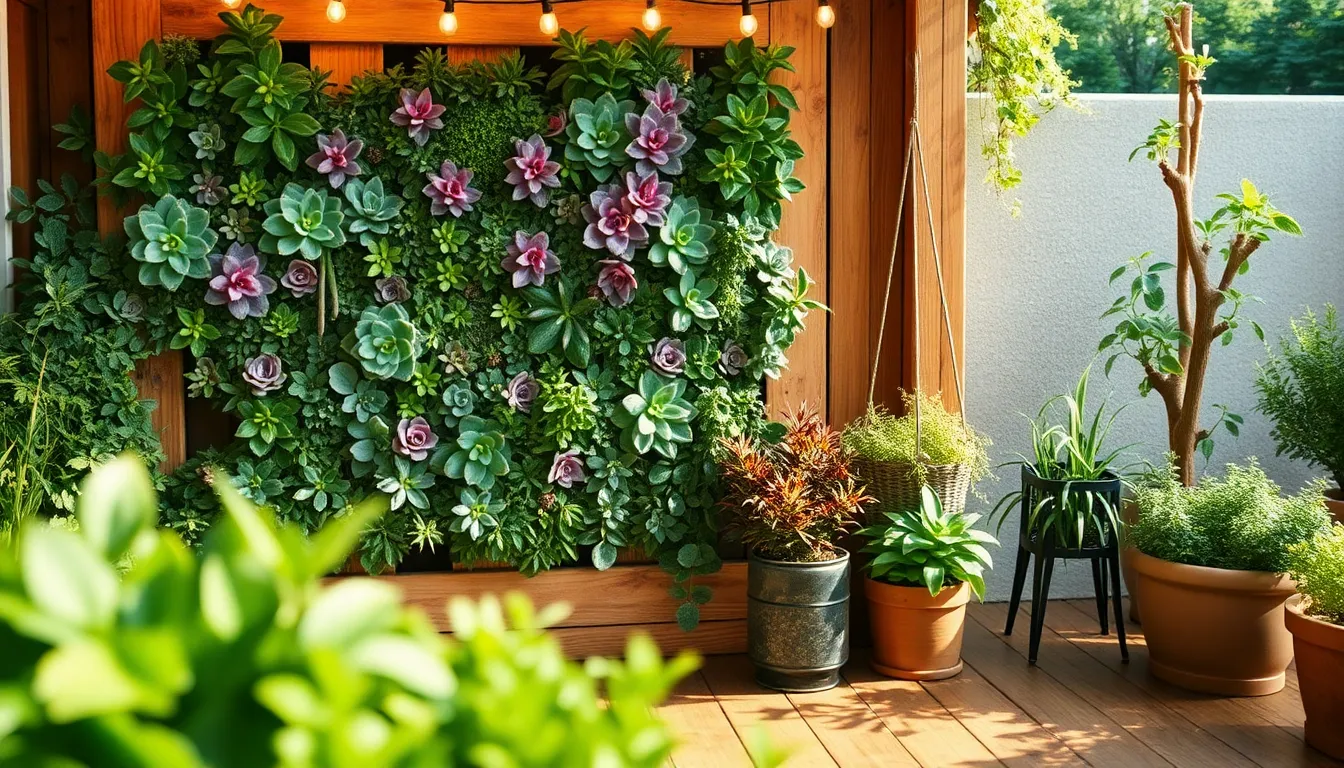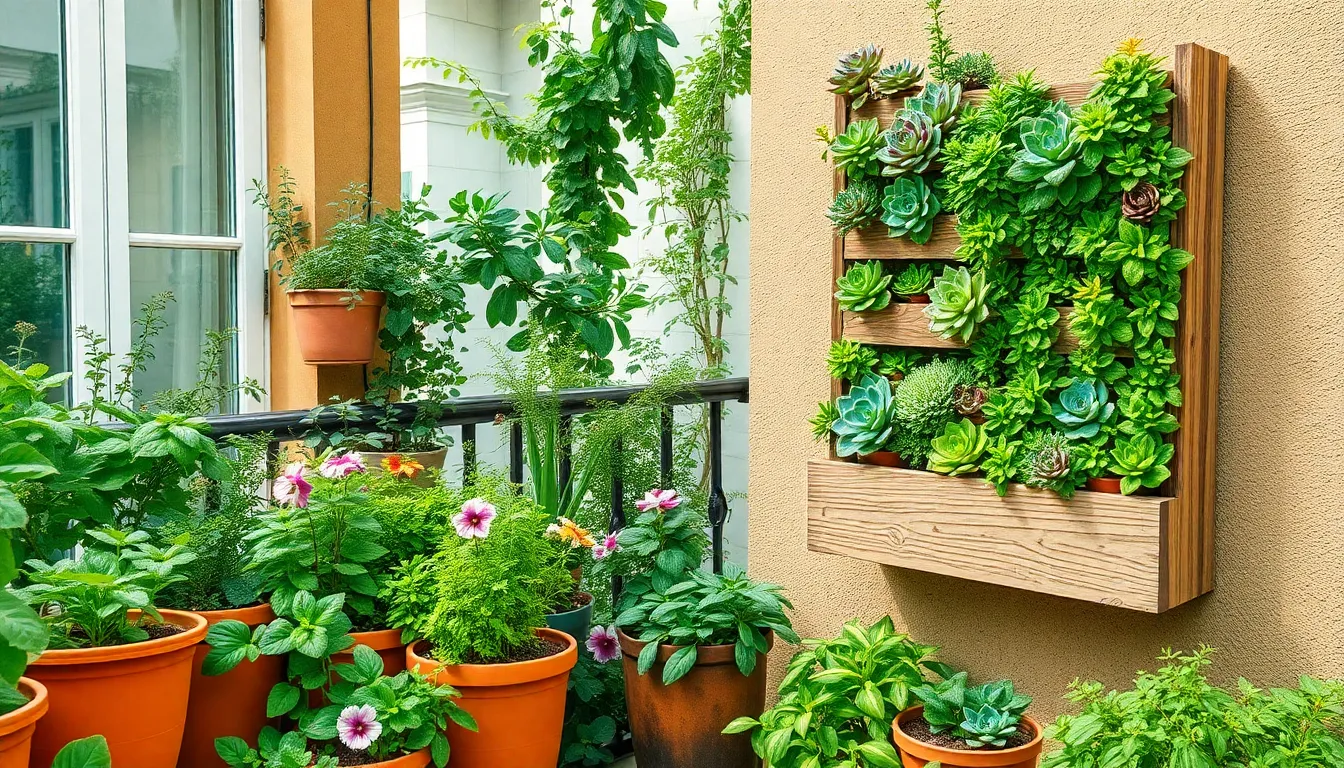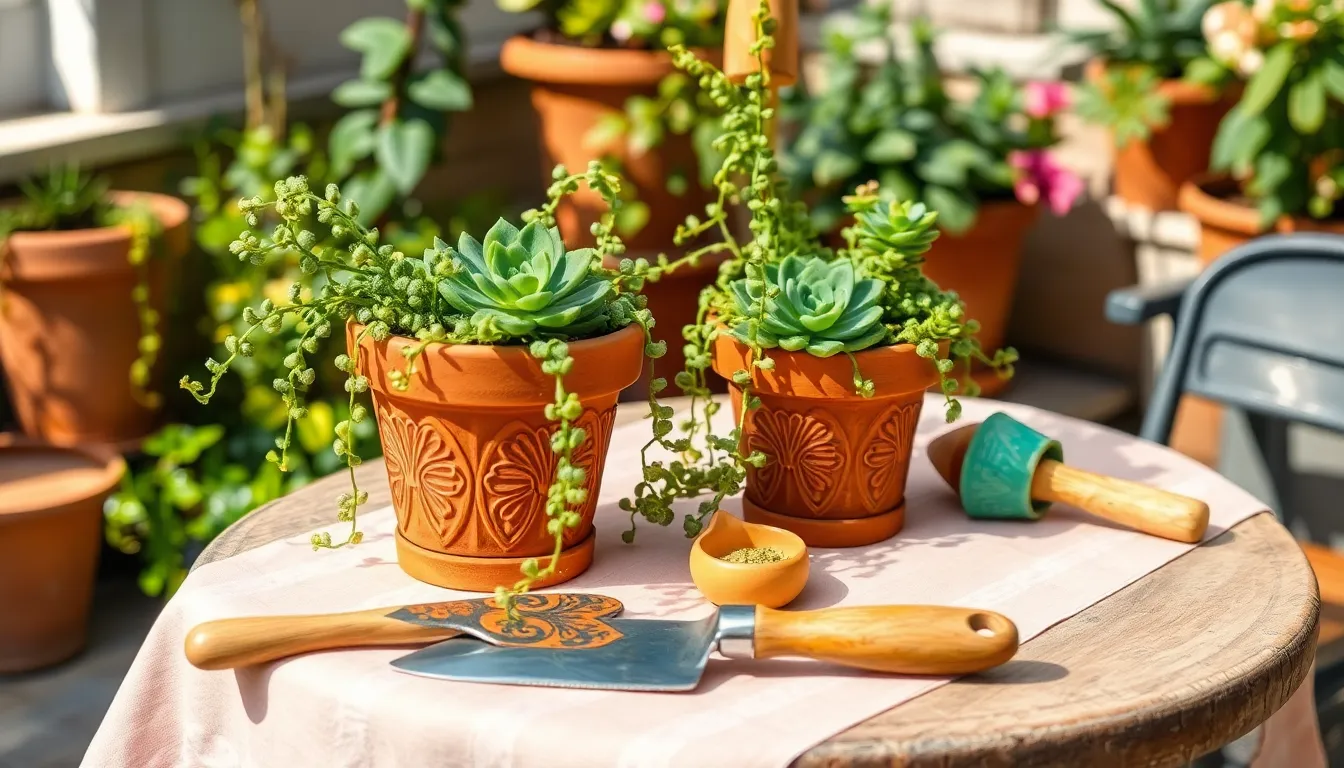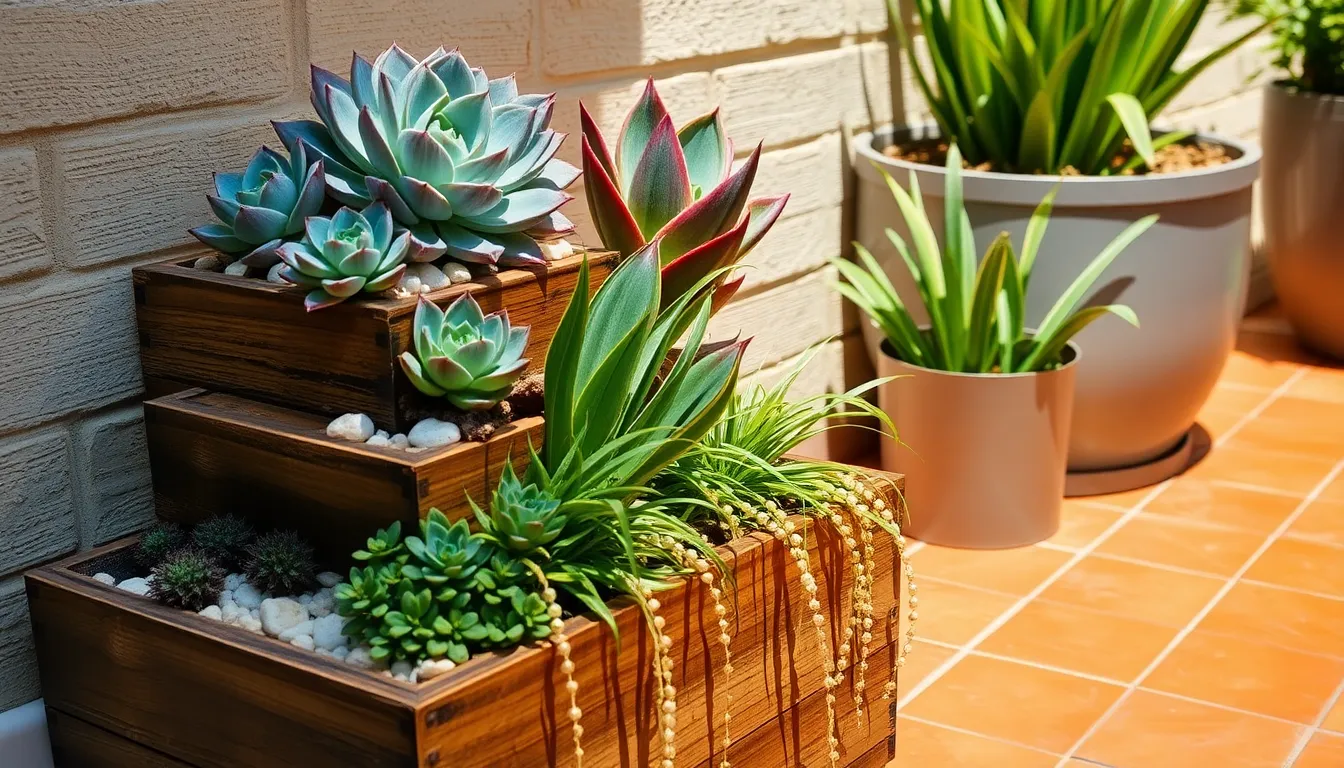Welcome to “15 DIY Patio Garden Ideas,” where the magic of gardening meets the creativity of do-it-yourself projects! Whether you’re a novice eager to plant your first seed or a seasoned gardener looking to transform a small space into a lush oasis, this guide is your ticket to crafting a vibrant patio garden. Each idea is carefully selected to inspire and empower, turning any patio into a blooming retreat that brings joy and tranquility to your daily life.
In this guide, you’ll discover not just beautiful designs but also practical solutions that cater to every skill level. These projects promise to maximize your space, enhance your gardening skills, and reward you with the satisfaction of seeing your efforts flourish. With our easy-to-follow instructions and a little bit of your own personal flair, you’ll soon enjoy the delightful blend of nature and creativity right at your doorstep. Get ready to dig in and watch your confidence grow alongside your garden!
Create Vertical Garden Planters
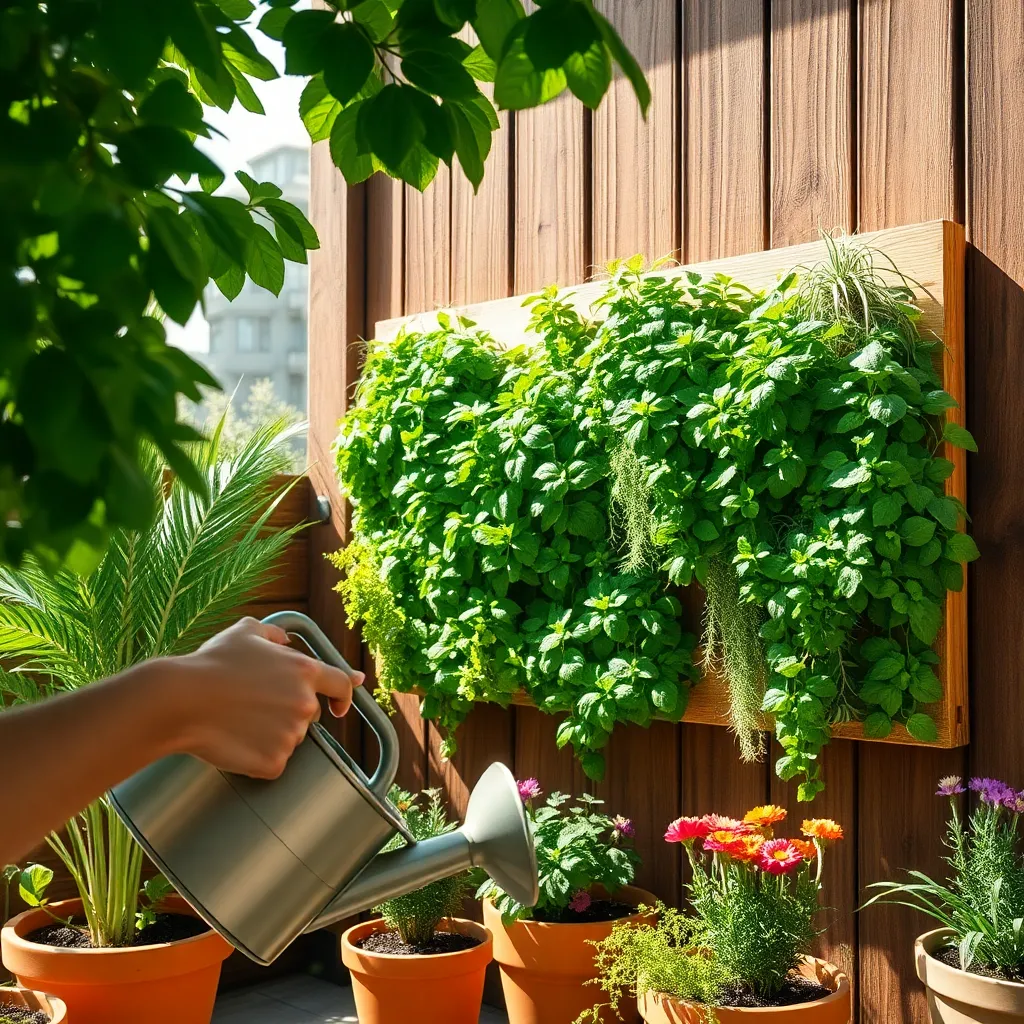
A vertical garden is an excellent way to maximize your patio space while adding a lush layer of greenery. Start by selecting a sturdy vertical planter or building one yourself using materials like wood pallets or a metal frame.
Choose plants that thrive in your climate and have similar light and water requirements. For beginners, consider using hardy succulents or herbs like mint or basil, which are forgiving and easy to manage.
Ensure your vertical planters have adequate drainage to prevent root rot. Use a high-quality potting mix that retains moisture without becoming waterlogged, such as a mix containing perlite or vermiculite.
Watering can be more challenging in vertical gardens, as the top plants tend to dry out faster than those at the bottom. Aim to water your garden every few days, checking the soil moisture regularly with your finger to avoid overwatering.
For advanced gardeners, try incorporating an irrigation system to automate watering, especially during hot summer months. Regularly prune your plants to maintain their shape and encourage healthy growth, paying extra attention to any signs of pests or disease.
Fertilize your vertical garden every few weeks during the growing season to ensure nutrients are replenished. Use a balanced, water-soluble fertilizer to support the diverse needs of your plants without overwhelming them.
Build a DIY Herb Spiral
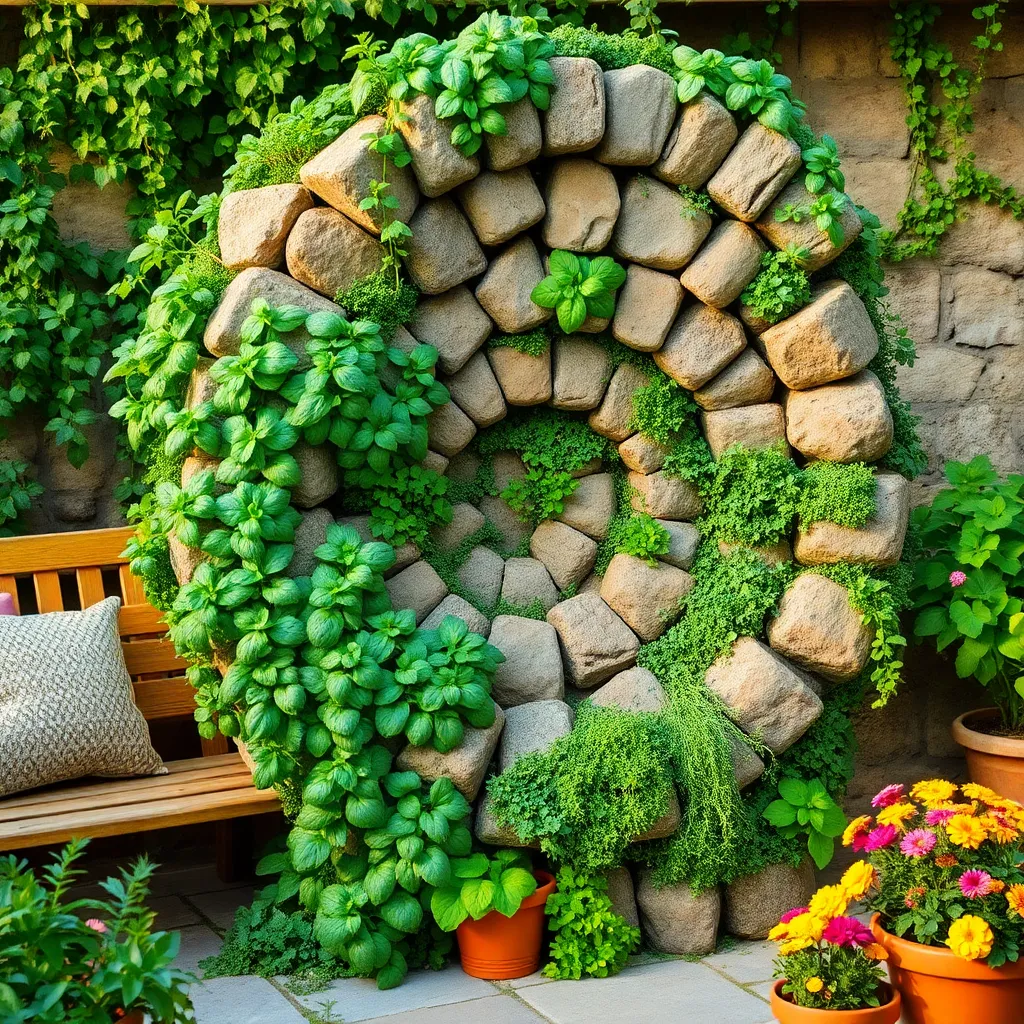
Creating a DIY herb spiral is a fantastic way to maximize space and grow a variety of herbs in a small area. This spiral-shaped garden bed uses vertical space efficiently and creates microclimates that suit different herb needs.
Begin by choosing a sunny location, as most herbs thrive with plenty of sunlight. Use stones, bricks, or recycled materials to build the spiral, starting from the center and working outward, gradually increasing the height.
Fill the spiral with a well-draining soil mix, incorporating organic matter for nutrients. Position herbs according to their sun and moisture preferences—for example, plant rosemary and thyme at the top where it’s drier, and basil and mint lower down where it retains more moisture.
Water your herb spiral regularly, but be cautious not to overwater, especially in the top sections. Mulching helps retain soil moisture and suppresses weeds, making it easier to maintain.
For advanced gardeners, consider adding companion plants like marigolds to deter pests. Regularly harvest your herbs to encourage bushier growth and ensure a continuous supply of fresh flavors for your kitchen.
Install Hanging Basket Displays
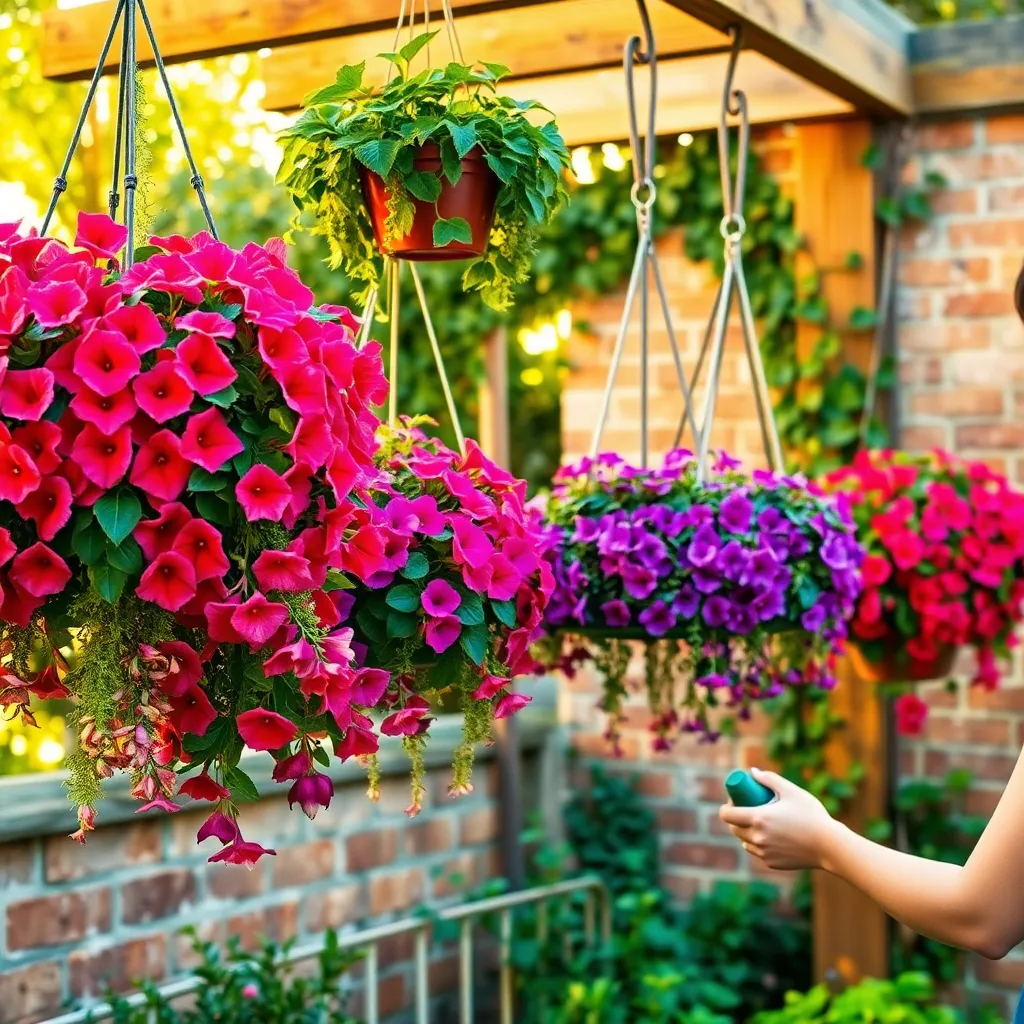
Hanging basket displays can transform any patio into a lush oasis without taking up valuable floor space. To get started, select baskets with good drainage and fill them with a high-quality potting mix enriched with slow-release fertilizer.
Consider choosing plants that thrive in the same lighting conditions as your patio, such as fuchsias or petunias for full sun. Watering frequency is crucial; baskets may need watering daily during hot weather, as they dry out faster than ground plants.
Mixing different plant varieties can create stunning visual contrasts. Pair trailing plants like ivy or lobelia with upright varieties like geraniums to add height and texture to your display.
For a more advanced touch, experiment with color themes by selecting plants with complementary or contrasting blossoms. Keep an eye on your baskets for pests, and prune regularly to encourage new growth and maintain shape.
Use Pallet Planters for Space
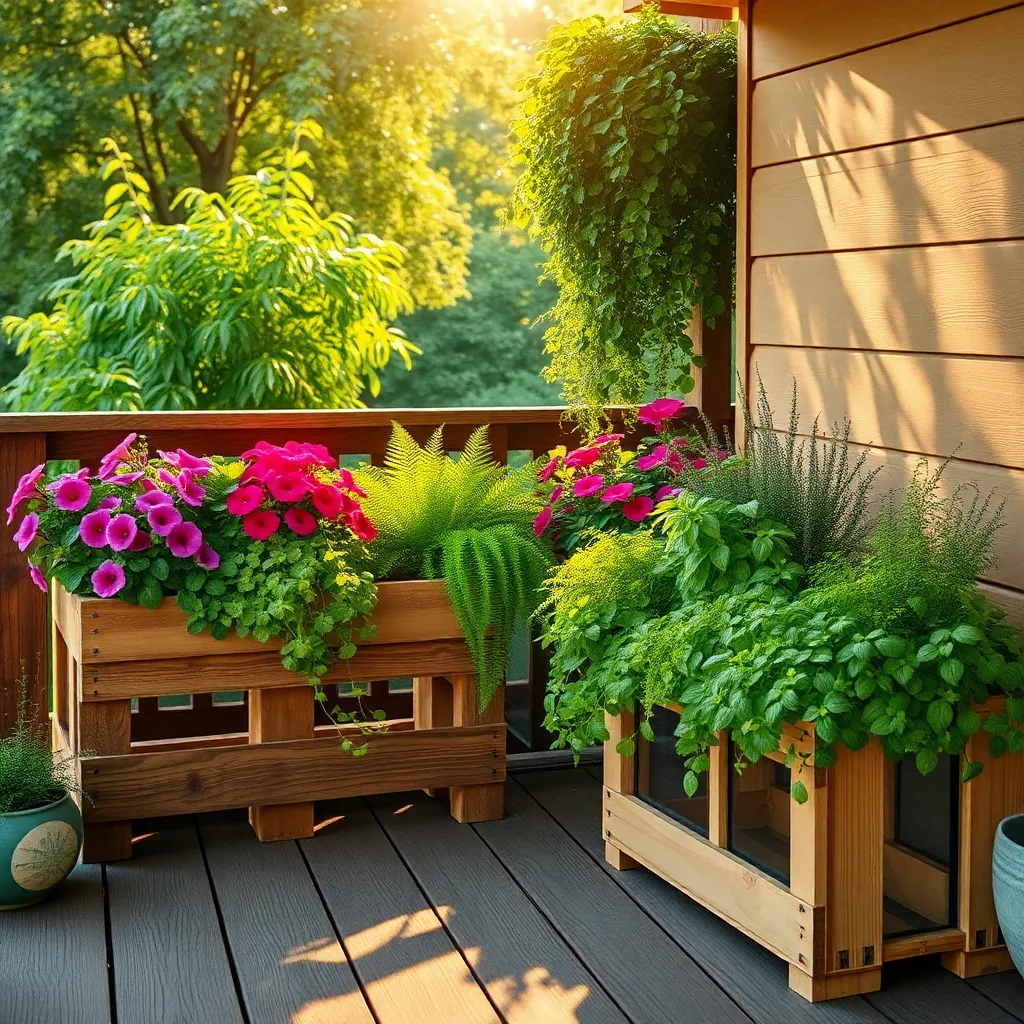
Pallet planters offer a fantastic solution for maximizing space in small patio gardens. By utilizing vertical space, you can grow a variety of plants even when ground space is limited.
Start by selecting a sturdy, untreated wooden pallet to ensure no harmful chemicals leach into your plants. Secure the pallet against a wall or fence, making sure it’s stable and can support the weight of the plants and soil.
Fill each section of the pallet with a high-quality potting mix that retains moisture but drains well. Opt for a mix that includes components like peat moss, perlite, or vermiculite for optimal plant health.
Consider growing a mix of herbs, flowers, and small vegetables for a diverse and visually appealing display. Herbs like basil, thyme, and cilantro thrive in these conditions, as do compact flowers like pansies and petunias.
Water the plants regularly, especially during dry spells, ensuring the soil remains consistently moist but not waterlogged. Check the soil daily and adjust your watering schedule based on the needs of your specific plants and climate.
For more advanced gardeners, try integrating an automatic drip irrigation system to maintain consistent moisture levels. This setup can help maintain the health of your plants with minimal maintenance, freeing you to enjoy your lush vertical garden.
Craft a Container Water Garden
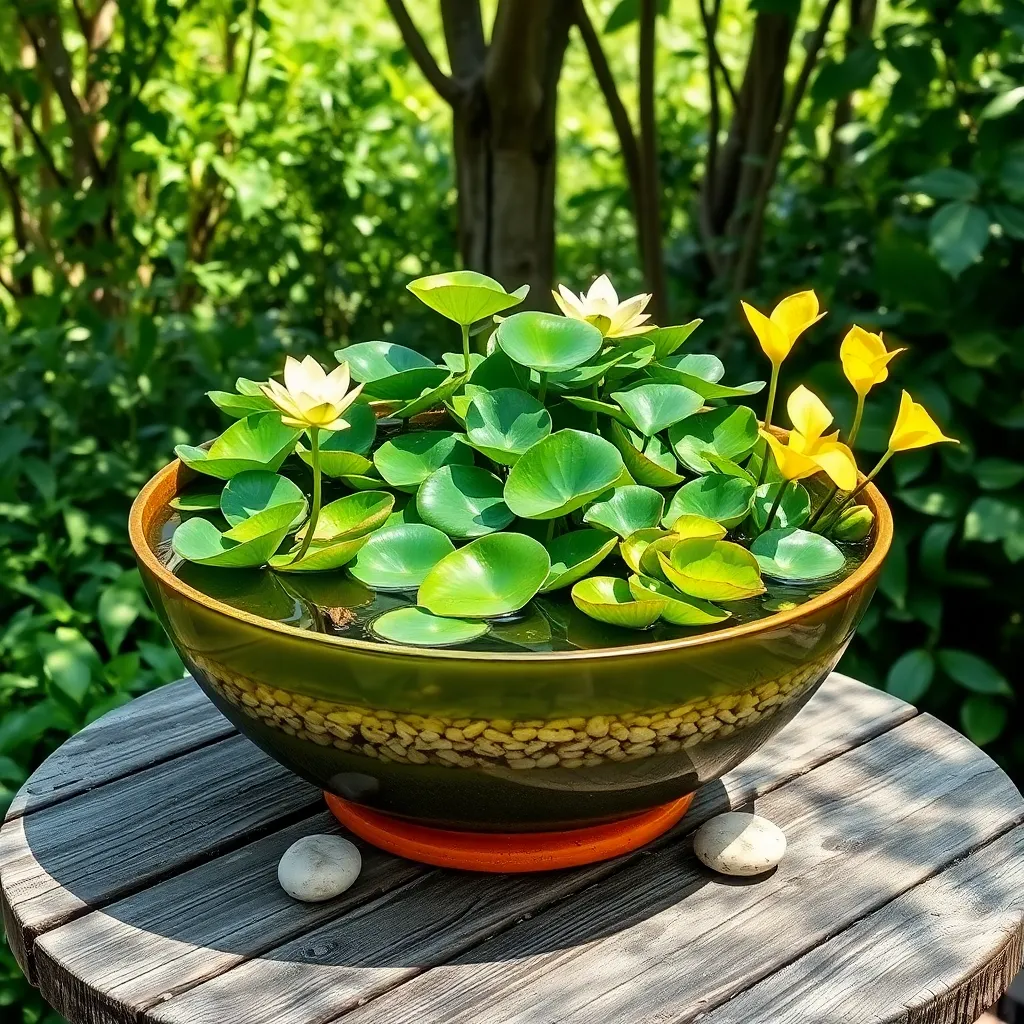
Creating a container water garden can transform your patio into a serene oasis. Choose a container that is at least 12 inches deep and wide enough to accommodate your aquatic plants and accessories.
Begin by lining the bottom of your container with a layer of heavy gravel or pebbles. This helps anchor your plants and provides a natural habitat for beneficial bacteria.
Opt for aquatic plants like water lilies, water lettuce, or dwarf papyrus, which thrive in water and add lush greenery. Ensure these plants receive at least 5 to 6 hours of sunlight daily to flourish.
Maintain your water garden by topping off the water level as it evaporates, using rainwater if possible to avoid chlorine buildup. Regularly prune dead leaves and remove any algae to keep the water clear and healthy.
For a more advanced touch, consider adding a small solar-powered fountain to enhance both the aesthetic and circulation of your water garden. This not only adds a soothing sound element but also helps oxygenate the water, benefiting your aquatic plants.
Design a Mobile Garden Cart
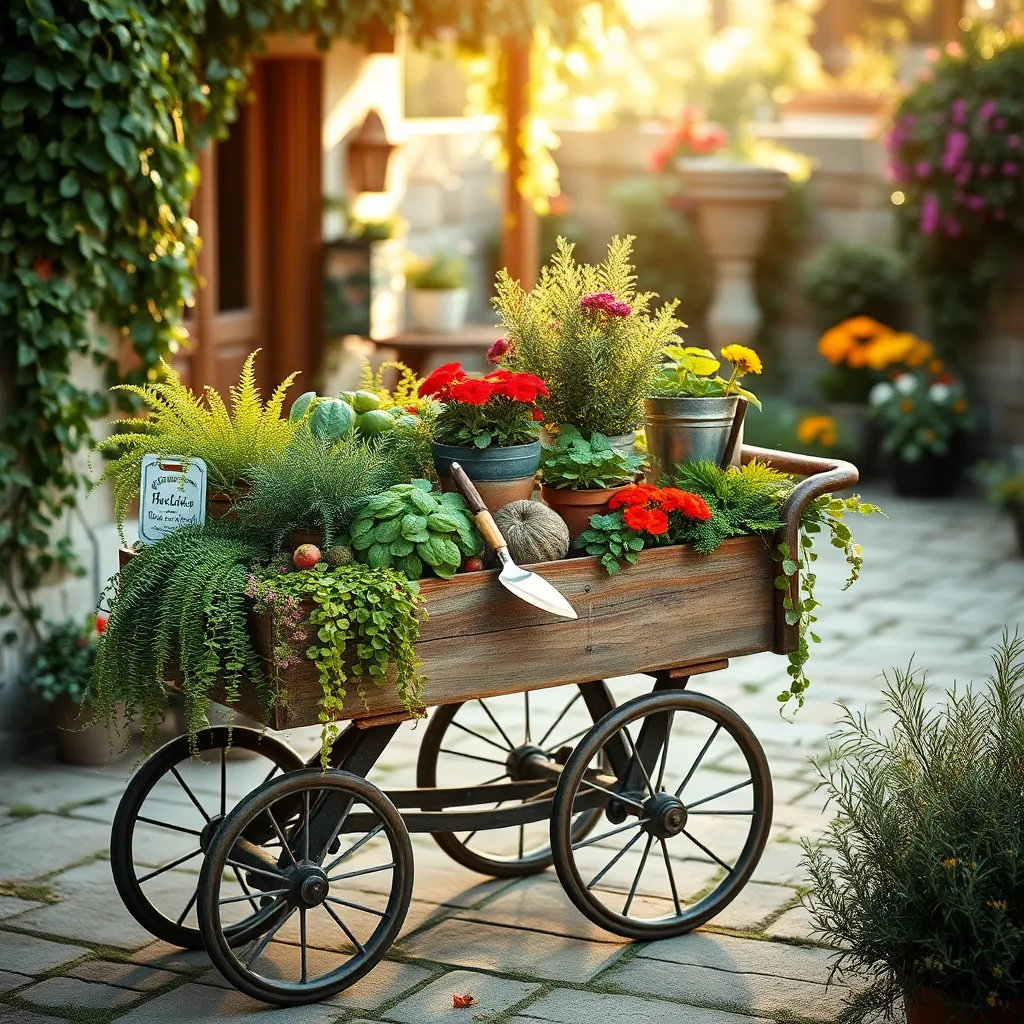
A mobile garden cart is a versatile addition to your patio, offering the flexibility to move plants for optimal sunlight or protection. To build one, start with a sturdy platform, like reclaimed wood or metal, and attach durable caster wheels for mobility.
Consider the weight of soil and plants when selecting materials, ensuring your cart is robust enough to handle the load. Use treated wood or weather-resistant metal to withstand the elements and prolong the life of your cart.
For planting, choose a mix of herbs, leafy greens, or small flowering plants that thrive in containers. Select a high-quality potting mix with good drainage to support healthy plant growth.
Watering can be simplified with a built-in system; consider adding a drip irrigation setup for consistent moisture. Make sure to adjust the system as needed, considering seasonal changes in evaporation and plant requirements.
Construct a Tiered Plant Stand
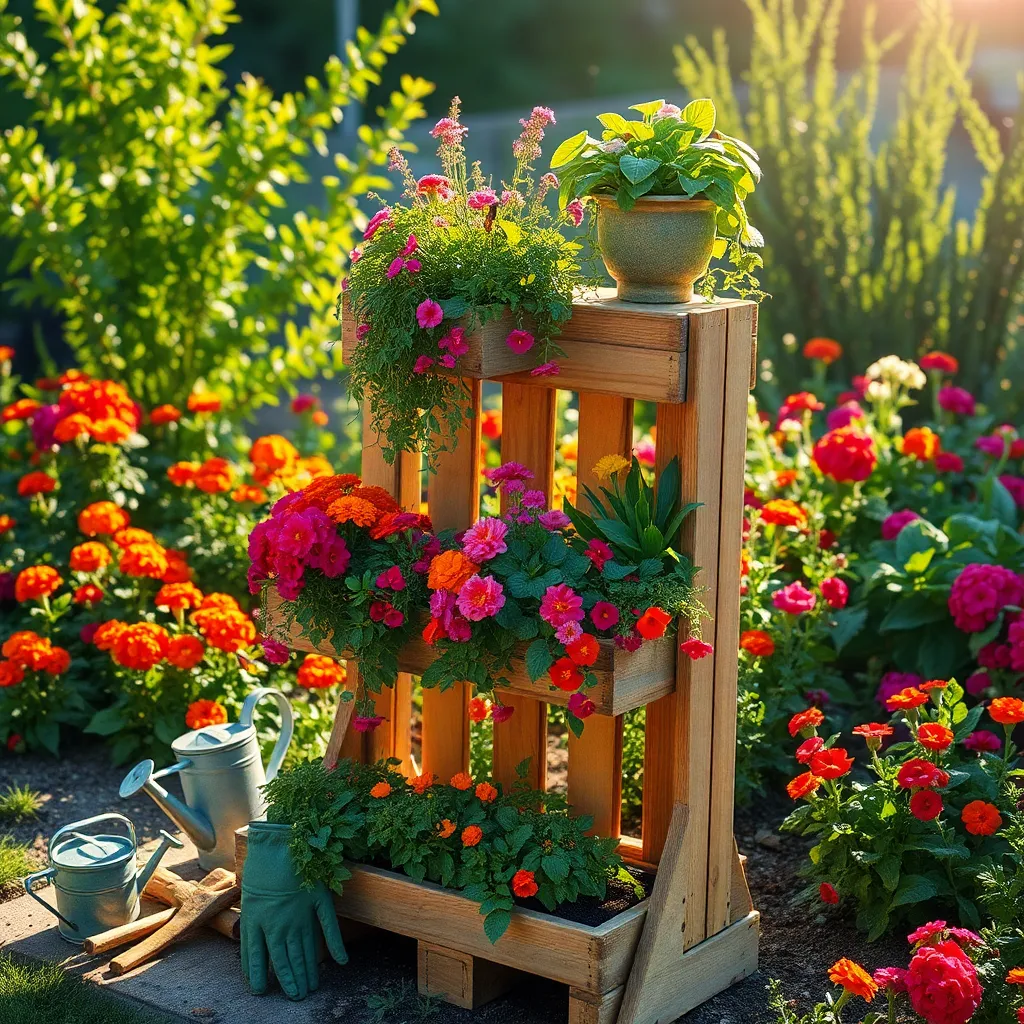
Constructing a tiered plant stand is an excellent way to maximize space on your patio while adding visual appeal. This DIY project can accommodate a variety of plants, allowing you to experiment with different species and arrangements.
Start by selecting the right materials, such as durable wood or metal, and ensure they are weather-resistant. Wooden stands should be treated with sealant to prevent rot, while metal stands can be painted with rust-resistant paint for longevity.
Position your plant stand in a location that receives the appropriate amount of sunlight for your chosen plants. Consider the light requirements of each plant—for example, place sun-loving plants at the top tier and shade-tolerant varieties at the bottom.
When choosing plants, mix textures and heights to create a dynamic display. Combine trailing plants like ivy with upright species such as lavender to add depth and interest.
Ensure each pot has proper drainage to prevent overwatering, which is a common issue in tiered stands. Use a high-quality potting mix that retains moisture but also drains well, such as a mix containing perlite or vermiculite.
Repurpose Furniture as Planters
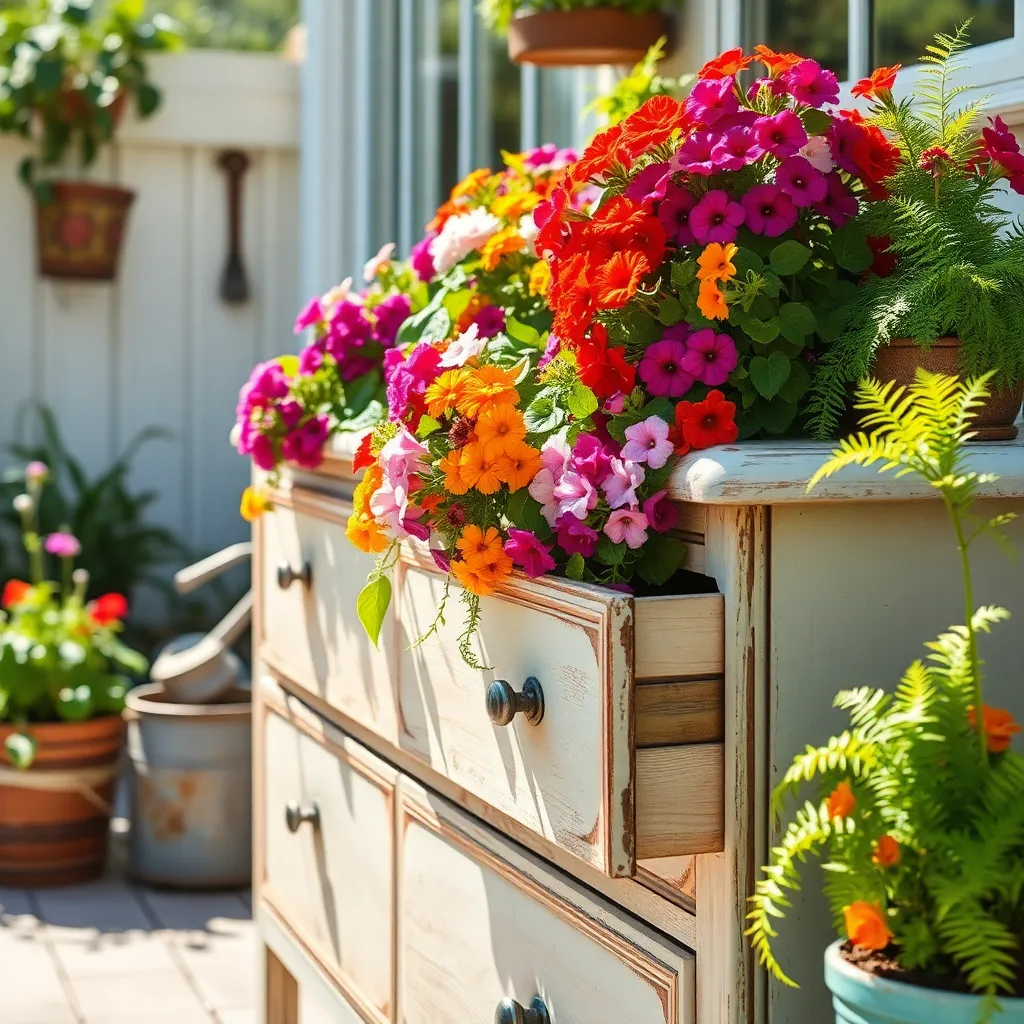
Transforming old furniture into planters can add a unique charm to your patio garden. Begin by selecting pieces that have potential, such as old dressers, chairs, or even bathtubs, which can serve as creative and functional containers for your plants.
Before planting, ensure the furniture is prepared adequately to support plant life. Drill drainage holes at the bottom of drawers or seats to prevent waterlogging, which is crucial for plant health.
When choosing plants, consider those that thrive in shallow soil, like succulents or herbs. These plants are not only easy to manage but also perfect for repurposed furniture that might not offer deep planting spaces.
For a more advanced touch, use a moisture-retentive potting mix to ensure even water distribution. Adding a layer of pebbles at the bottom of each container can further enhance drainage and prevent root rot.
Incorporate Self-Watering Pots
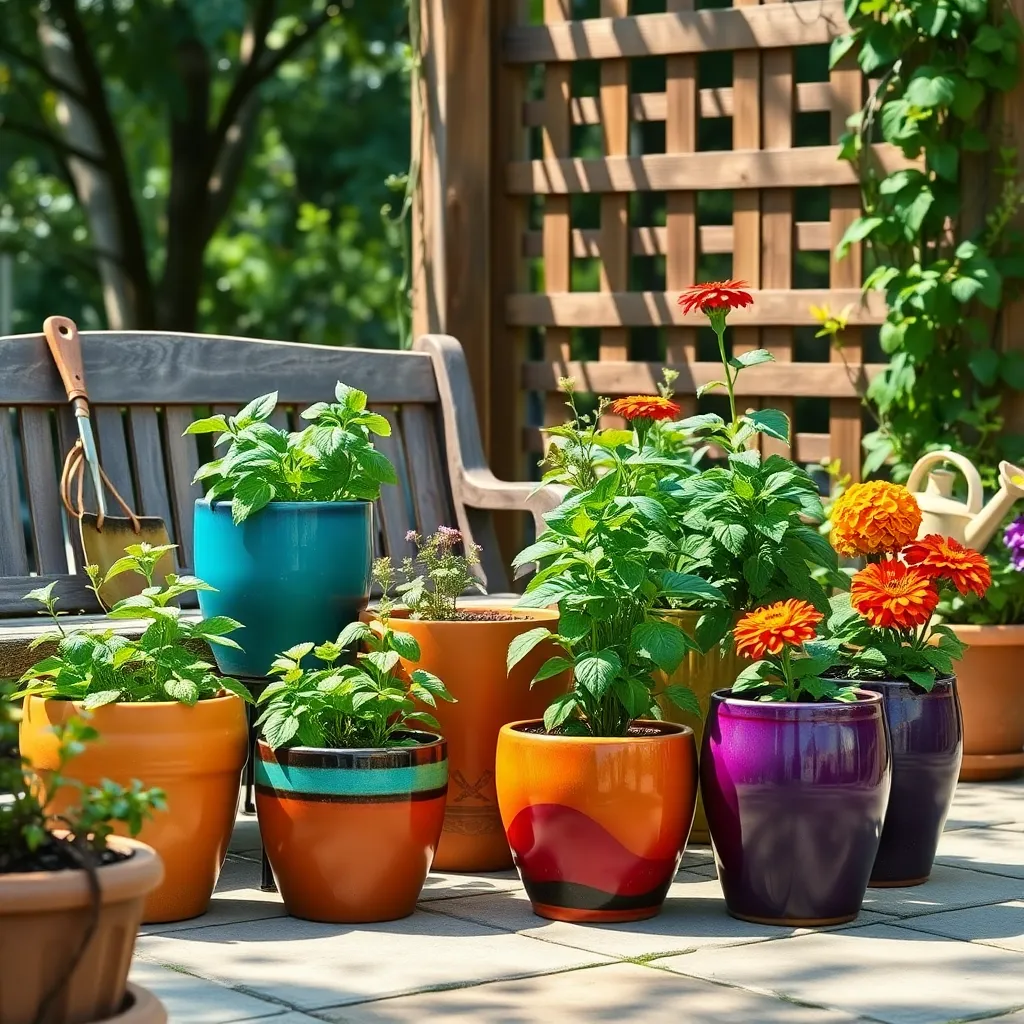
Self-watering pots can revolutionize your patio garden by providing consistent moisture without constant attention. These pots are particularly useful for gardeners who travel frequently or have busy schedules, ensuring your plants stay hydrated.
Choose self-watering pots that are the appropriate size for the plants you intend to grow, as this will prevent root-bound conditions and ensure healthy growth. Look for pots with a large water reservoir, which can sustain plants for days or even weeks, depending on the weather and the plant’s water needs.
To set up a self-watering pot, fill the reservoir and plant your greenery in soil mixed with a moisture-retentive component like coconut coir or peat moss. This combination aids in maintaining a steady moisture level, reducing the need for frequent watering.
For beginners, consider starting with hardy plants such as herbs or succulents that thrive in self-watering pots. Advanced gardeners might explore growing more demanding plants like tomatoes or peppers, which benefit from the consistent moisture these pots provide.
Regularly check the water level indicator, if available, or make a habit of refilling the reservoir weekly to ensure your plants never go thirsty. This simple routine not only promotes healthy growth but also frees you from daily watering duties.
Make a DIY Trellis Wall
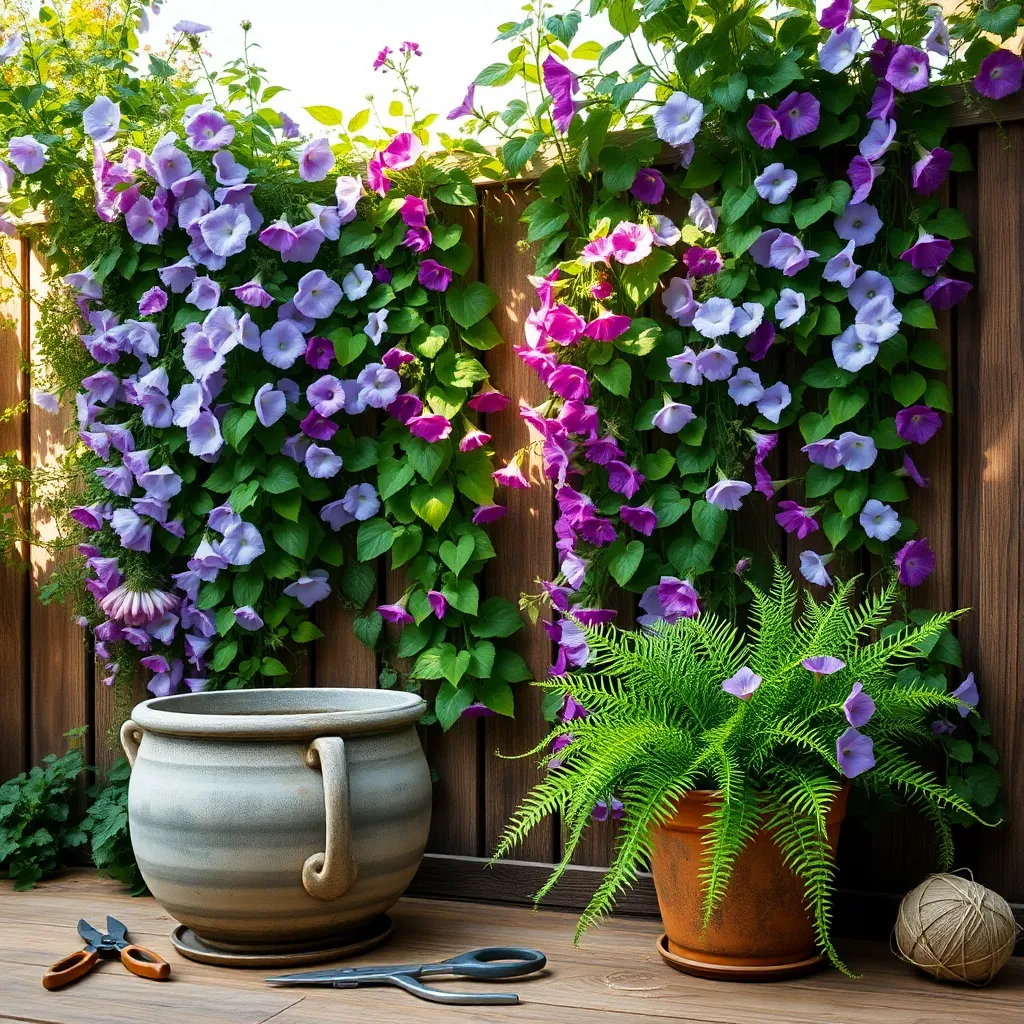
Creating a DIY trellis wall can transform your patio into a lush, vertical garden. Start by selecting sturdy materials such as bamboo, wood, or metal to construct the frame, ensuring it can support the weight of climbing plants.
To construct your trellis wall, measure the space where it will be installed and cut your chosen materials to fit. Assemble the trellis using strong connectors like screws or zip ties to maintain structural integrity.
Once your trellis is in place, consider planting fast-growing climbers like clematis, jasmine, or morning glory. These plants thrive in well-draining soil and require regular watering, especially during dry spells.
For more experienced gardeners, integrating a variety of climbing plants can add texture and color to your trellis. Experiment with different species, ensuring they receive adequate sunlight, typically about six hours per day.
Assemble a Small Greenhouse
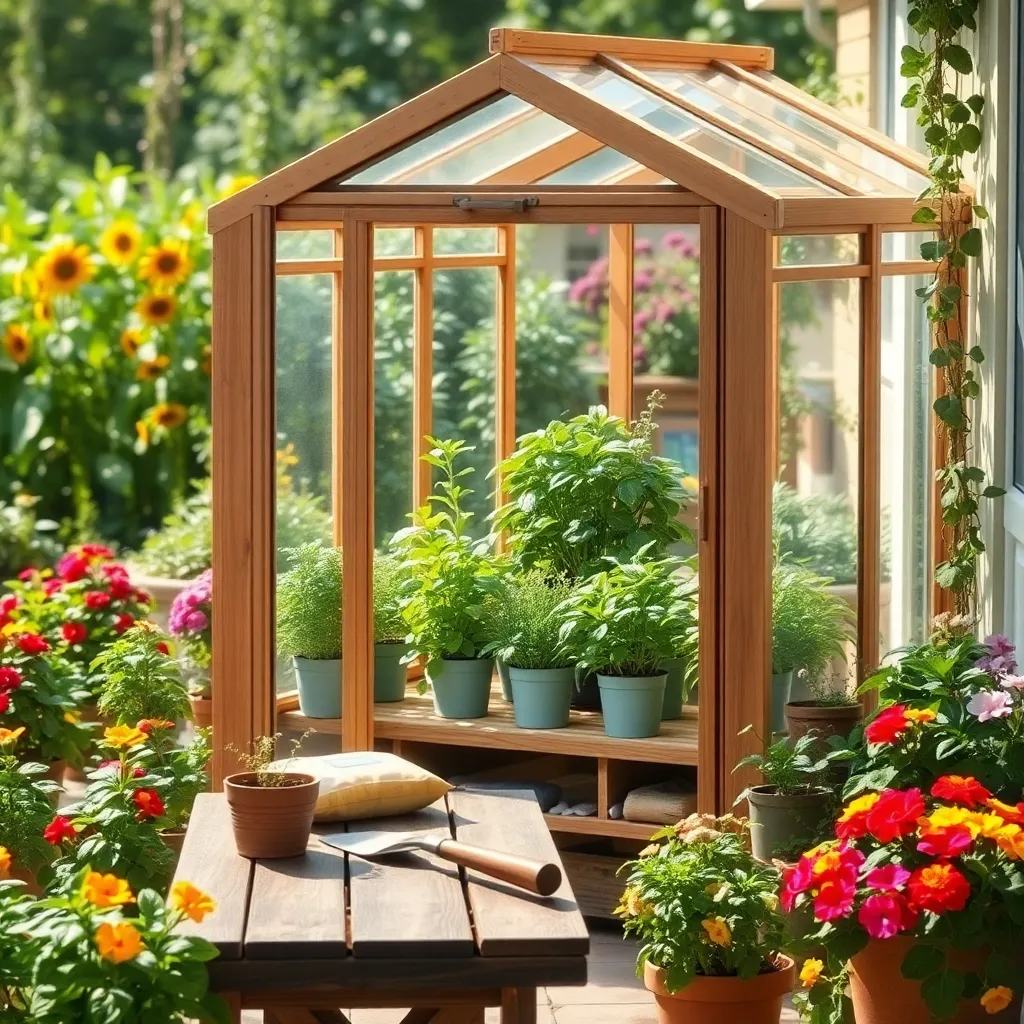
Building a small greenhouse on your patio is a fantastic way to extend your growing season and protect your plants from harsh weather. Start by choosing a location that gets plenty of sunlight and is shielded from strong winds.
Consider the size and material of your greenhouse; a compact structure made from polycarbonate panels is both durable and effective. These panels offer excellent insulation, helping to maintain a stable temperature inside your greenhouse.
Once assembled, focus on organizing the interior to maximize space and accessibility. Use shelving units or tiered plant stands to create vertical growing areas, allowing you to house more plants in a smaller footprint.
For optimal plant care, ensure that the greenhouse has adequate ventilation to prevent overheating. Installing a small fan or using operable vents will help maintain a healthy airflow, reducing the risk of mold and disease.
Paint Pots for Visual Impact
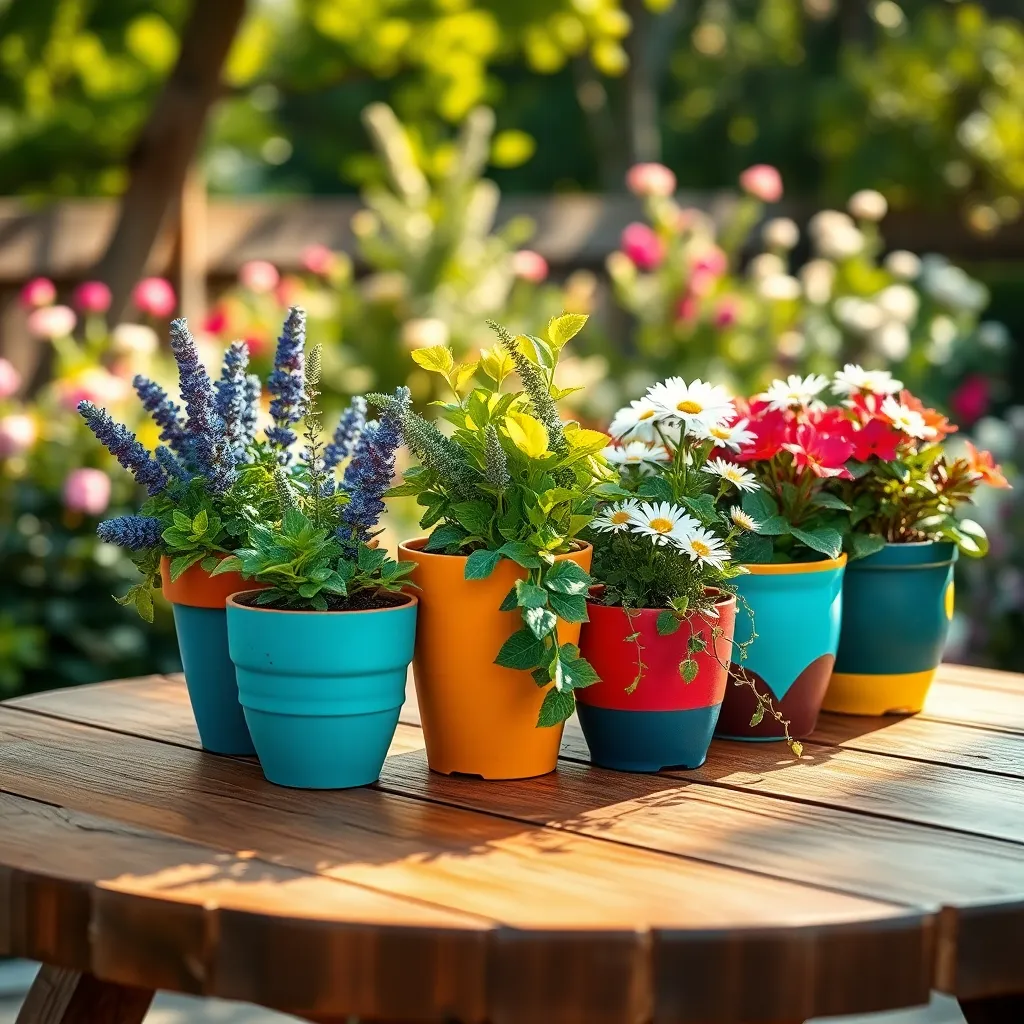
Painting pots can transform your patio into a vibrant and inviting space. Choose colors that complement your garden’s aesthetic, or go bold with contrasting hues for a lively visual impact.
To start, select pots made from terracotta or ceramic, as they hold paint well and are durable. Use acrylic paints for their weather-resistant properties, ensuring your creations last through different seasons.
For beginners, simple designs like stripes or polka dots can be a fun and easy way to add personality. Advanced gardeners might consider more intricate patterns or even stencils for a professional look.
Beyond aesthetics, painted pots can also contribute to plant health. Lighter-colored pots reflect sunlight, helping to keep roots cooler in hot climates, while dark colors can absorb heat in colder regions, providing warmth to plants.
Use Recycled Bottles as Planters
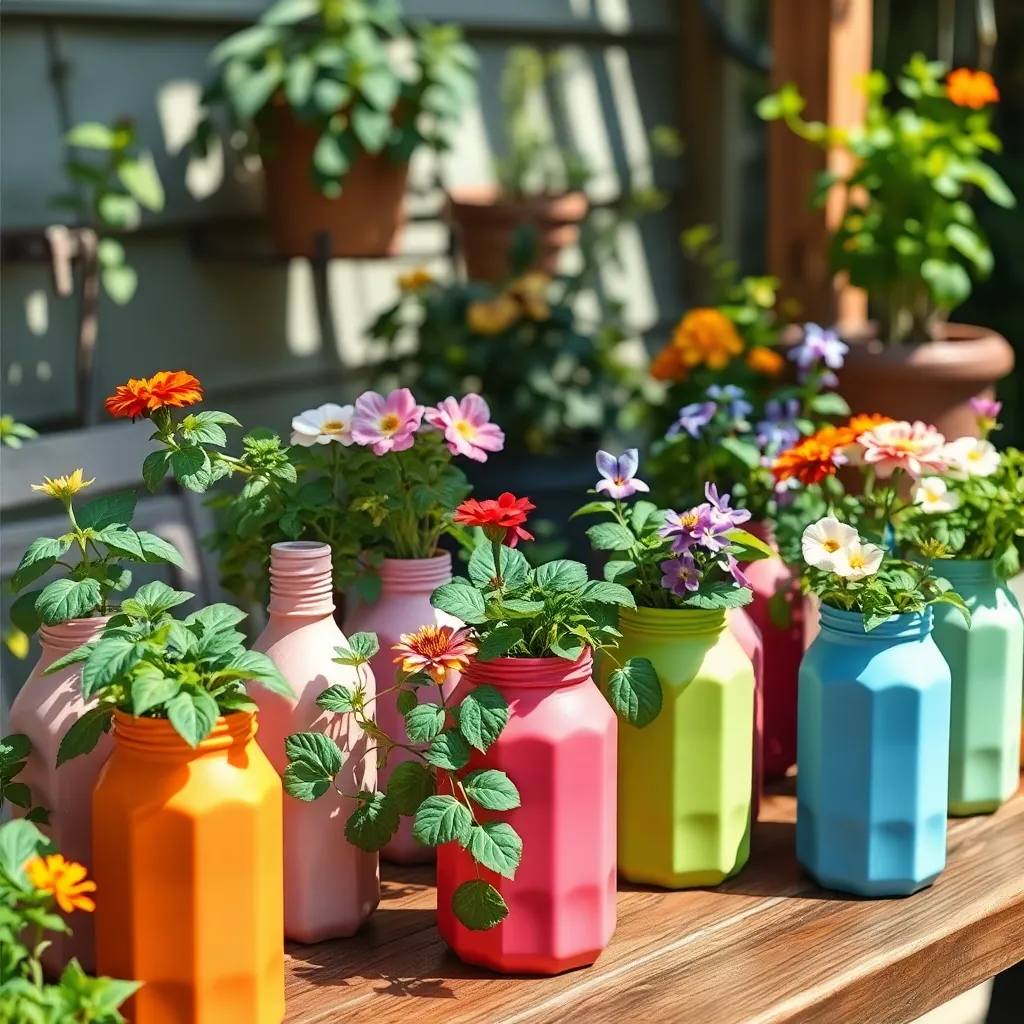
Transforming recycled bottles into planters is an eco-friendly way to enhance your patio garden. Begin by choosing sturdy plastic bottles and cutting them to your desired height, ensuring there are drainage holes at the bottom.
Next, fill the bottles with a well-draining potting mix, such as a combination of peat, perlite, and vermiculite. This mix will provide the necessary aeration and moisture retention, promoting healthy root growth.
When selecting plants for your bottle planters, consider small herbs or compact flowering plants that thrive in confined spaces. Herbs like basil or mint are excellent choices, as they require minimal space and can be regularly harvested.
Ensure your bottle planters receive adequate sunlight, ideally 4 to 6 hours of direct light per day. Regular watering is crucial, but avoid overwatering by allowing the soil to dry slightly between sessions.
For an advanced touch, try hanging your bottle planters using twine or wire to create a vertical garden. This not only saves space but also adds a unique visual element to your patio.
Set Up a Drip Irrigation System
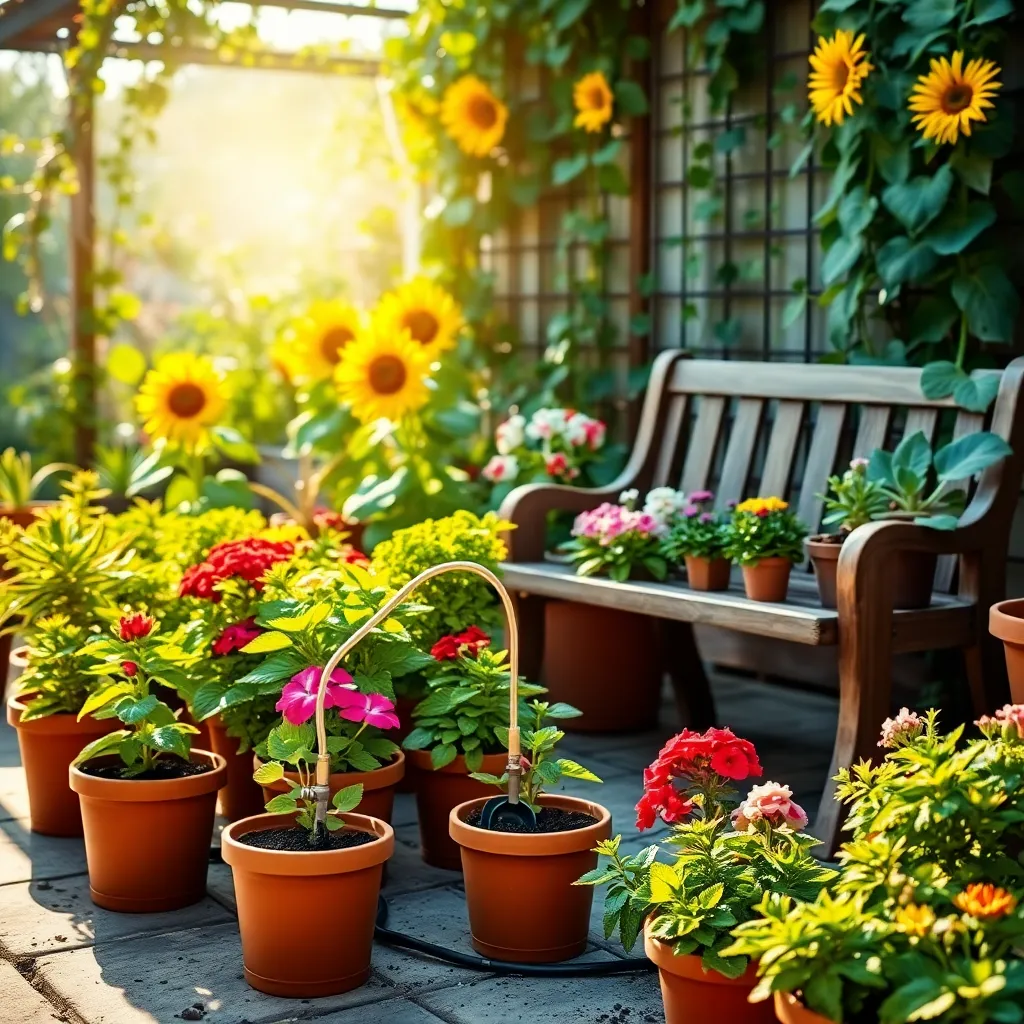
Setting up a drip irrigation system is a game-changer for patio gardeners, ensuring that plants receive consistent moisture without the fuss. Begin by assessing your patio layout and identifying the plants that would benefit most from this efficient watering method.
To start, you’ll need a basic drip irrigation kit, which typically includes tubing, emitters, and connectors. These kits are widely available at gardening centers and can be customized to fit your specific setup.
Position the main tubing along the rows or groupings of your patio plants, securing it with stakes to keep it in place. Ensure that emitters are placed near the base of each plant, aiming for even distribution of water.
Once installed, adjust the flow rate to match the watering needs of your plants, typically aiming for a slow, steady drip. Monitor the system regularly to ensure it is functioning correctly, and make adjustments as needed based on weather changes and plant growth.
Add Solar-Powered Garden Lights
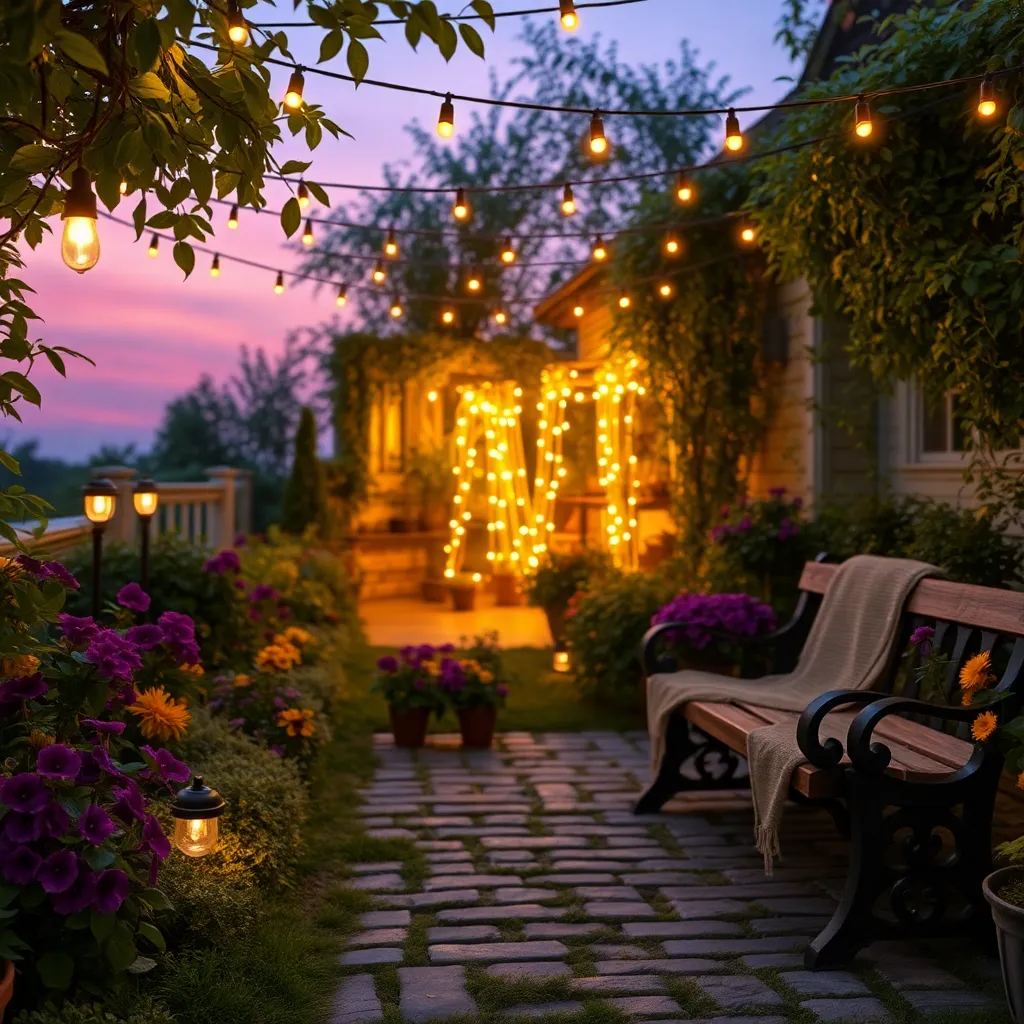
Adding solar-powered garden lights can transform your patio into a magical space at night. These lights are eco-friendly and easy to install, making them an excellent choice for any gardener looking to enhance their outdoor area.
To get started, consider the placement of your lights to highlight specific garden features, like pathways or flower beds. Ensure that your solar panels are positioned to receive maximum sunlight during the day to provide ample lighting at night.
Choose lights with adjustable brightness settings to cater to different moods and occasions. For those who want to experiment with design, some solar lights come with interchangeable shades or colors, allowing you to customize the ambiance of your patio garden.
Regularly clean the solar panels to maintain their efficiency, especially in areas with dust or pollen. Advanced gardeners might explore solar lights with motion sensors to add a layer of security to their garden while conserving energy.
Conclusion: Growing Success with These Plants
In exploring the ’15 DIY Patio Garden Ideas,’ we unearthed key relationship concepts that mirror the growth and nurturing required in our personal connections. From creating shared spaces with vertical planters to fostering communication through collaborative projects, each idea illustrated how tending to both plants and partnerships requires patience, creativity, and commitment. Encouraging intimacy, we delved into the importance of setting intentions with themed gardens, while the joy of discovery was highlighted through sensory gardens. We also explored the value of personal space with individual garden corners and the shared joy of harvests from edible gardens.
Now, take a moment to choose one idea that resonated with you and your partner, and begin crafting your own green sanctuary together. Whether it’s setting up a cozy corner or starting a small herb garden, let this be a step towards cultivating a vibrant relationship.
Bookmark this article so you can revisit these inspiring ideas and continue nurturing your relationship garden. Remember, just as a garden thrives with care and attention, so will your relationship. Embrace the journey with optimism, knowing that every seed you plant today can blossom into lasting success tomorrow.

